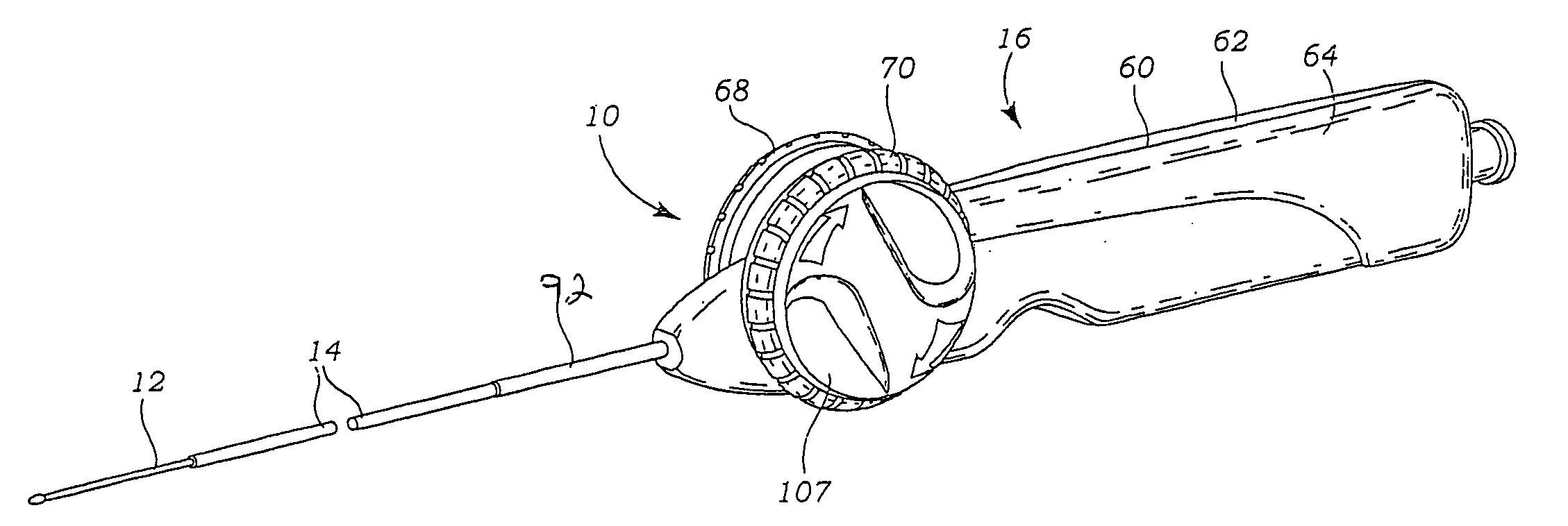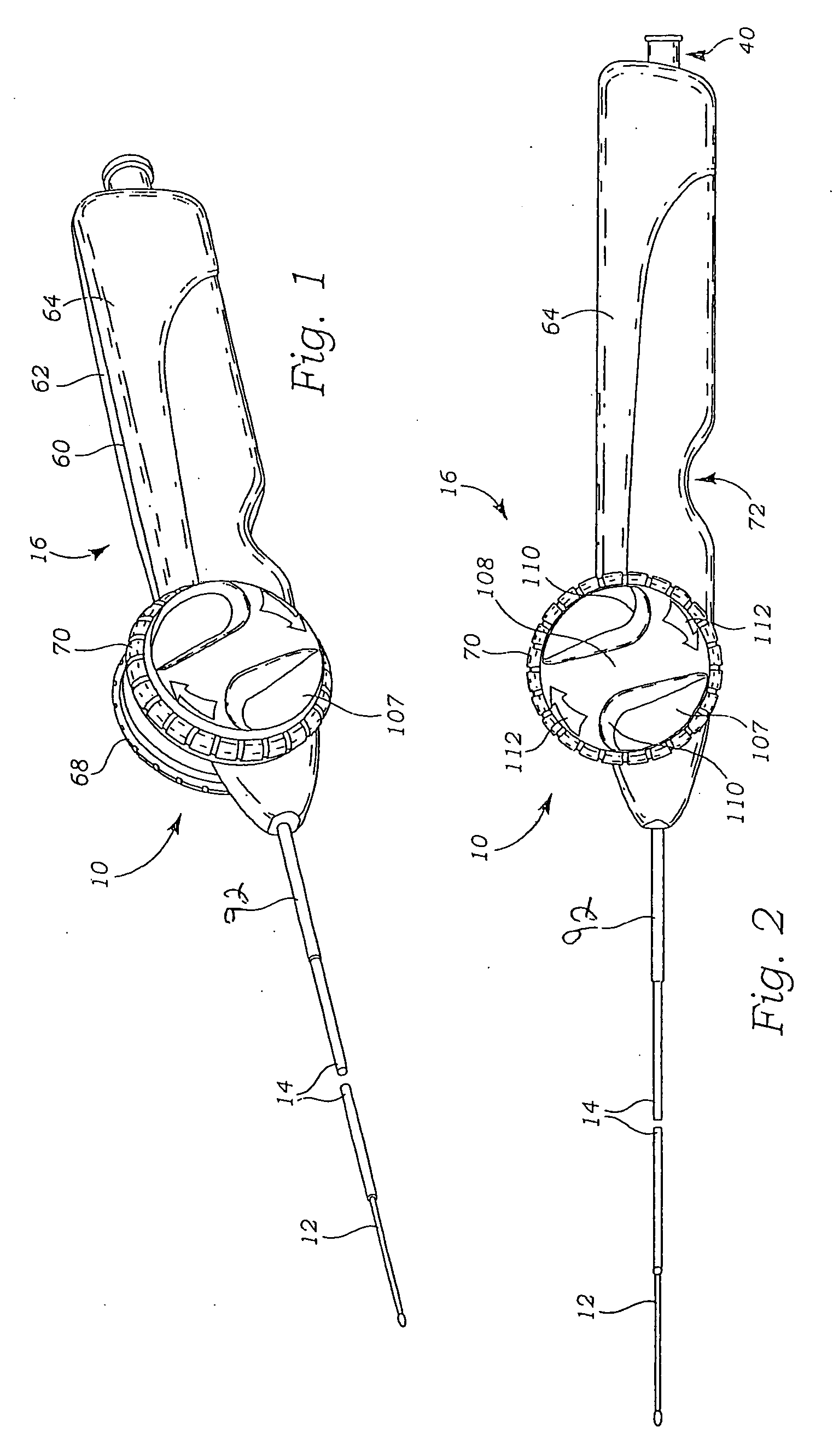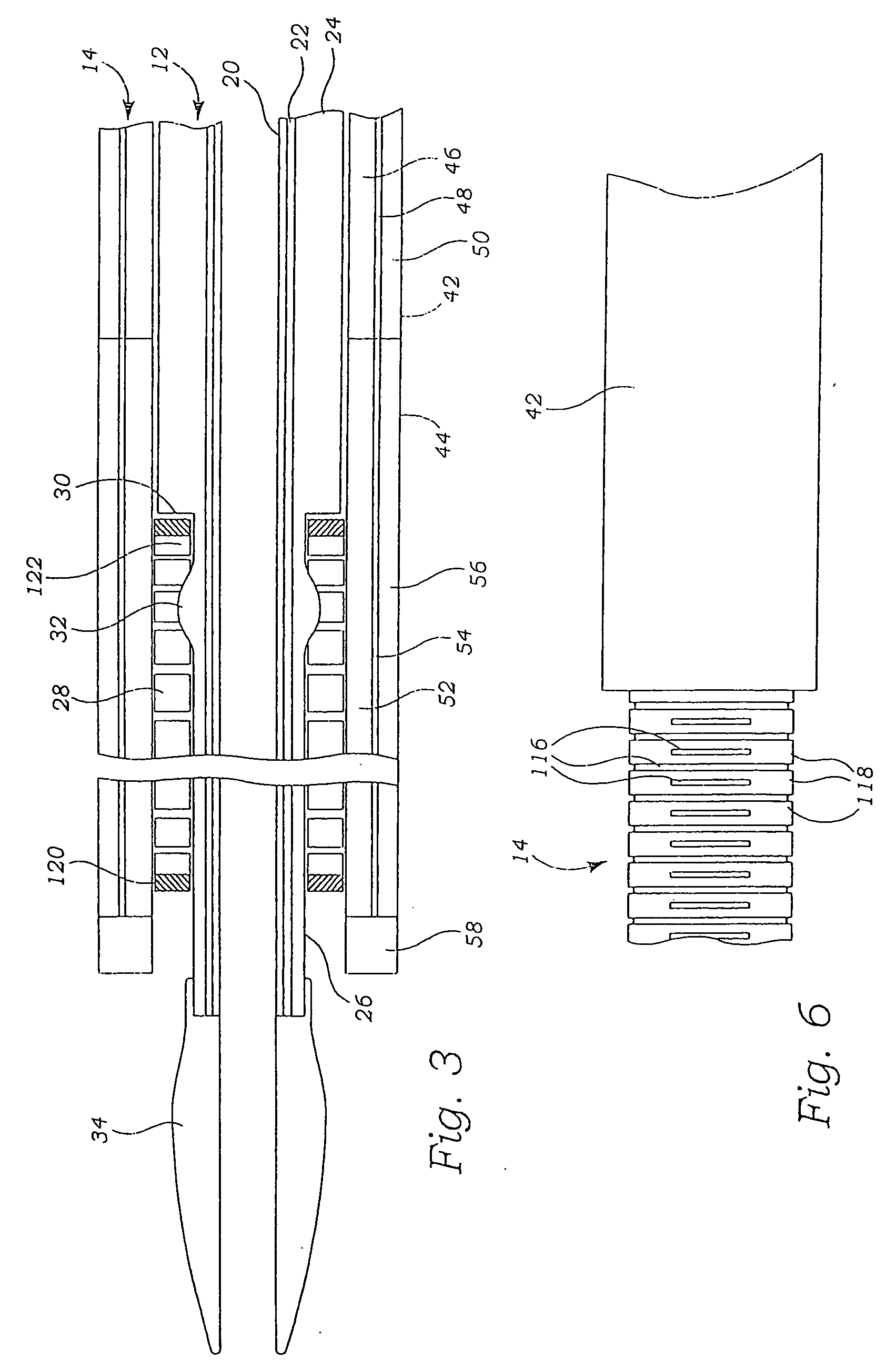Stent delivery system
a technology of stent and inner member, which is applied in the field of medical devices, can solve the problems of limited control during deployment, difficult to maintain the position of the inner member, and the tendency of the stent to escape from the inner member, and achieve the effect of high degree of control
- Summary
- Abstract
- Description
- Claims
- Application Information
AI Technical Summary
Benefits of technology
Problems solved by technology
Method used
Image
Examples
Embodiment Construction
[0035] Referring now to FIGS. 1 and 2, a stent delivery system 10 generally includes an inner tubular member 12, a tubular jacket 14 slidable over the inner tubular member 12, and a handle 16 adapted to effect longitudinal movement of the jacket 14 relative to the inner tubular member 12.
[0036] Turning now to FIG. 3, the inner tubular member 12 is preferably a coextruded, trilayer construction. The inner layer 20 is preferably polytetrafluoroethylene (PTFE), fluorinated ethylene propylene (FEP), high density polyethylene (HDPE), or urethane. The middle layer 22 is a wire braid, and more preferably a 304V stainless steel flat wire braid of 1×3 (40 picks) construction, with wires having a 0.001 inch by 0.003 inch rectangular cross-section. Wires of other metals and alloys may also be used, including other stainless steel alloys, cobalt-chrome alloys, and other high-strength, high-stiffness, corrosion-resistant metal alloys. The outer layer 24 is preferably a thermoplastic, melt proce...
PUM
 Login to View More
Login to View More Abstract
Description
Claims
Application Information
 Login to View More
Login to View More - R&D
- Intellectual Property
- Life Sciences
- Materials
- Tech Scout
- Unparalleled Data Quality
- Higher Quality Content
- 60% Fewer Hallucinations
Browse by: Latest US Patents, China's latest patents, Technical Efficacy Thesaurus, Application Domain, Technology Topic, Popular Technical Reports.
© 2025 PatSnap. All rights reserved.Legal|Privacy policy|Modern Slavery Act Transparency Statement|Sitemap|About US| Contact US: help@patsnap.com



